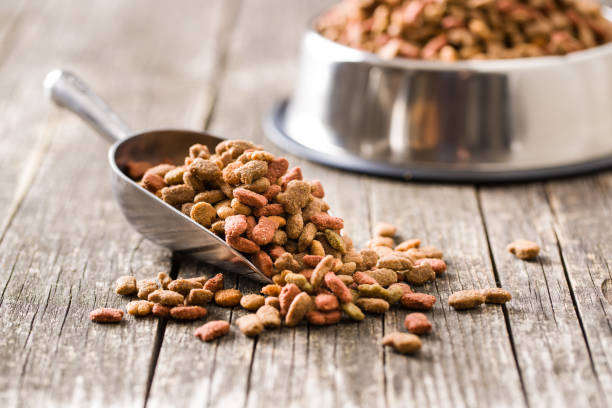
What Are the Emerging Trends in Thailand Pet Food Ingredients?
Share
According to the report by Next Move Strategy Consulting, Thailand’s pet food sector is predicted to reach USD 1561.45 million by 2030, at a CAGR of 13.1% from 2024 to 2030. In terms of volume the market size is projected to reach 315.80 kilotons in 2030, with a CAGR of 9.7% from 2024 to 2030.
It is at a crossroads, driven by shifting consumer expectations and cutting‑edge ingredient innovations. From the rise of human‑grade luxury formulations to the promise of lab‑grown proteins, stakeholders in Thailand are rethinking the building blocks of pet nutrition to meet both quality and sustainability goals.
Download Your Free Sample Here
What Is Driving the Demand for Human‑Grade Luxury Pet Food in Thailand?
According to BBC, Pet owners today view their animals as integral family members—and they want the same assurances around safety, transparency, and nutrition that they demand for themselves. This article highlights how “human‑grade” pet foods—made with ingredients legally safe for human consumption—are commanding premium price points and capturing consumer attention.
Key Drivers:
- Humanization of Pets: Owners increasingly seek food that mirrors their own dietary standards, believing it promotes better health and longevity.
- Transparency and Trust: Clear labelling and sourcing disclosures build confidence, especially amid concerns over allergens and additives.
- Premium Positioning: Luxury dog and cat foods often include whole proteins, superfoods, and functional ingredients (e.g., joint‑support supplements).
Summary:
Thailand’s upscale pet‑food segment is poised to expand as affluent and urban consumers gravitate toward human‑grade, transparent products that reflect broader lifestyle and wellness trends.
- Pets are viewed as family, boosting demand for premium formulas.
- Clear ingredient sourcing differentiates luxury brands.
- Local distributors can leverage human‑grade claims to enter new retail channels.
How Will Lab‑Grown Cultivated Ingredients Impact Thailand’s Pet Food Industry?
According to Green Queen, the Cultivated (lab‑grown) meat is transitioning from concept to reality—and Thailand is on the radar. Simple Planet, a South Korean food‑tech startup, plans to submit regulatory dossiers in Thailand alongside South Korea and Singapore, aiming for market entry by 2026 with cell‑cultured proteins and omega‑3s in powder, paste, and oil formats.
Summary:
With regulatory frameworks evolving and targeted partnerships in place, Thailand is primed to be an early adopter of cultivated‑ingredient pet foods—offering both ethical and functional advantages.
- Thailand’s National Food Institute is collaborating on cell‑cultured ingredient standards.
- Halal‑compliant production unlocks a key demographic.
- Scaled bioreactor capacity paves the way for affordable, high‑protein pet ingredients.
What Challenges and Opportunities Lie Ahead for Thailand’s Pet Food Ingredient Market?
As Thailand’s market embraces premium and novel ingredients, it must navigate cost, regulation, and consumer education.
Challenges:
- Cost Barriers: Human‑grade and cultivated ingredients carry higher production costs, potentially limiting mass‑market appeal.
- Regulatory Complexity: Harmonizing food‑safety, novel‑food, and halal standards requires ongoing collaboration among authorities.
- Consumer Awareness: Pet owners need clear education on benefits versus price premiums to drive adoption.
Opportunities:
- Premium Niche Growth: Urban, affluent demographics will continue to drive human‑grade segment expansion.
- Sustainability Alignment: Cultivated meat offers a lower‑impact protein source, aligning with Thailand’s sustainability initiatives.
- Export Potential: Quality‑driven ingredient standards could position Thai manufacturers as regional leaders.
Summary:
Thailand’s pet food ingredient market sits between tradition and innovation; success will hinge on managing costs, regulatory synergy, and effective consumer communication.
- Balancing cost with perceived value is critical.
- Streamlined approvals and certification reinforce credibility.
- Educational campaigns can translate innovation into purchase intent.
Next Steps: Actionable Takeaways for Industry Stakeholders
- Engage Regulators Early: Proactively collaborate with the National Food Institute and Halal authorities to streamline novel‑food approvals.
- Educate Consumers: Launch targeted marketing that explains the health and sustainability benefits of human‑grade and cultivated ingredients.
- Pilot Premium Lines: Test small‑batch, human‑grade formulations in urban centers to gauge willingness‑to‑pay and refine positioning.
- Scale Strategically: Invest in cost‑efficient bioreactor capacity and serum‑free media to lower price barriers for cultivated proteins.
- Leverage Exports: Develop export‑ready ingredient lines that meet international human‑grade and halal standards, tapping into neighbouring markets.